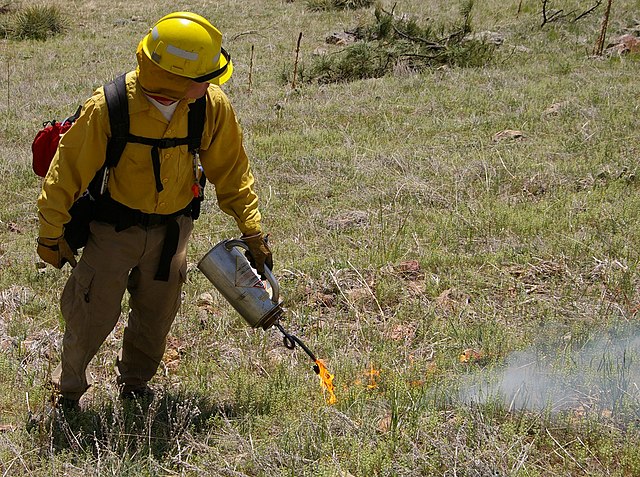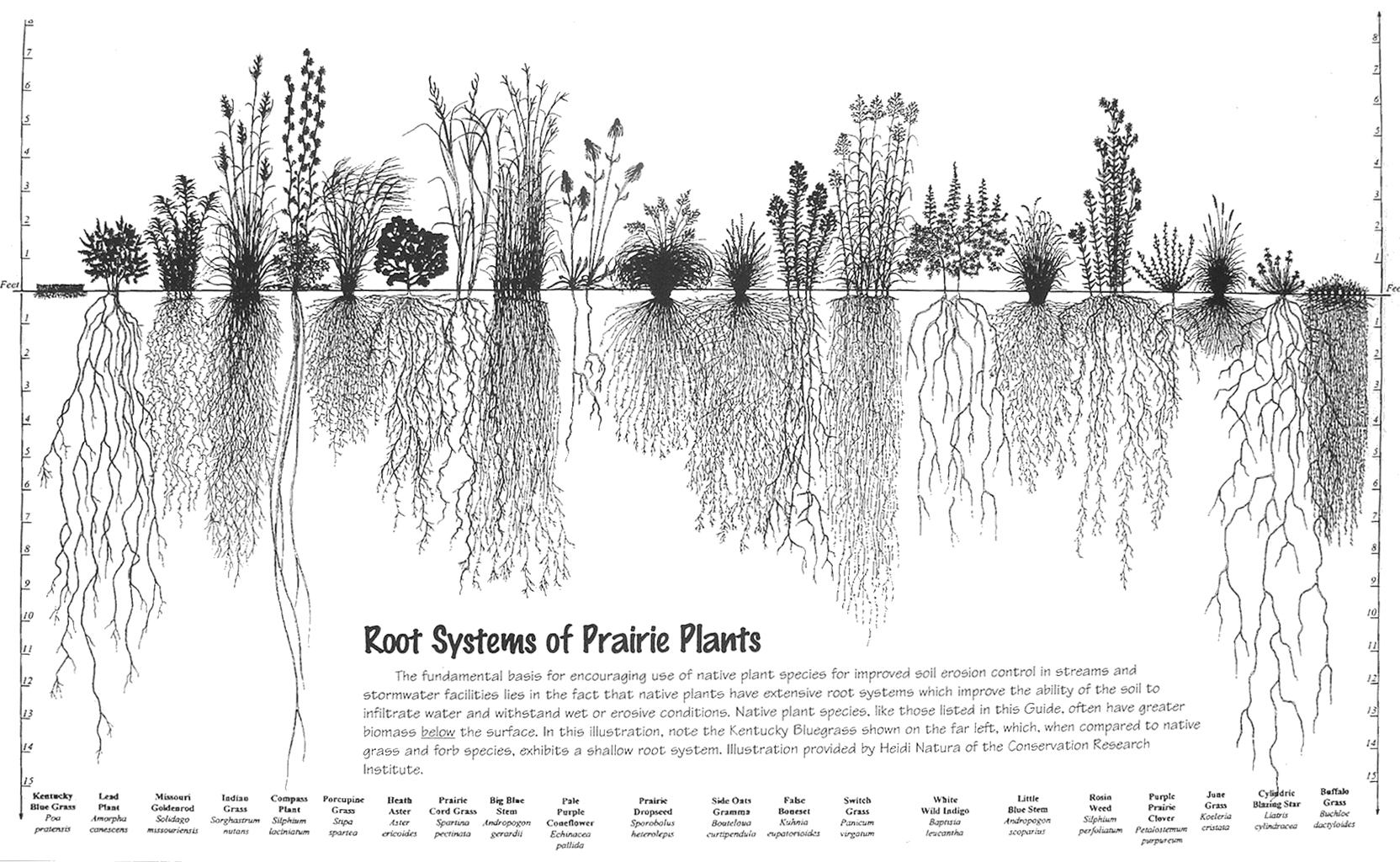Arbonaut
Go Climb It
put a fence around that and my sheep would love it:hmm3grin2orange:
Yup, sheep doo played a huge role. My doggie would like having 'em around.

put a fence around that and my sheep would love it:hmm3grin2orange:


And 2,4 D:msp_smile:
I'd like to know what he is burning off the Kentucky Bluegrass with, but he left.
 Which comes from a process called combustion via a fuel and air mixture from a wonderful and simple invention called a drip torch.
Which comes from a process called combustion via a fuel and air mixture from a wonderful and simple invention called a drip torch.


I spend a little time on my yard, and enjoy seeing what comes out of what I put into it.... It's still a work in progress and not completely filled in, someday.
But i design lawnmowers for a living so I'm kinda partial

I
Deep rooted perennial prairie plants create healthier soil biota, as well as growing tall above ground biomass which can intercept and store and filter more precipitation before it runs off - up to 53 tons per acre during one 1" per hour precipitation event - which is the main way in which we get clean water from overland flow.
A Kentucky Bluegrass lawn's (and any other short turfgrass) interception rate doesn't come anywhere remotely in the ballpark of that figure - most water applied to lawns runs right off because people apply too much at once. And the vegetation is too short. Oh and it plays a big role in why the Gulf of Mexico has such a huge dead zone.
To simplify: More prairie = cleaner water. More lawns and farms = low-oxygen water. I can live just fine without corn and turfgrass.
It's not about being an "environmental whacko", it's just common sense to not use a mundane lawn. But like I said, basic ecology and knowledge of one's natural heritage is sadly lost among most people. Not my fault you're insecure about that.
There's also the issue of soil carbon and water. Water quality always follows soil carbon levels. Turfgrass provides almost no soil carbon when compared to prairies. Grasslands as a whole store almost 1/3 of the world's carbon in the root systems - and that. It is lost, however, when prairies are plowed and converted to row crops and tame grazing pastures and lawns.
Oh, before I forget, if you've seen one square inch of non-native lawn, you've seen them all. If you've seen one square foot of prairie, you've got hundreds of billions more to see - and it changes every season!
Back to burning tomorrow!
Consequently, all those chemicals from fertilizers and herbicides, as well as your dog's and cat's fecal bacteria get carried with the water and into municipal stormwater drains. And eventually into that glass you fill up.
One of the Turf-Type tall fescue cultivars I employ in lawns is called, "Survivor." If you look at the above chart, which I'm glad FW posted, you'll notice it is conspicuously omitted.
Common sense is what we all have.
What FW is referring to as "common sense" is reserved for the elite. Thus it is something else.
 Nice job of showing your insecurity once again. Keep it up!
Nice job of showing your insecurity once again. Keep it up!If you like field mouse, chiggers and ticks all over your kids and burning your lawn with a torch to enhance fauna and biota, that's out of my league. Just don't twist facts.

because the roots can reach as deep as six feet in the soil to absorb water.
(Now that puts it in the top of the chart. And KBG can reach two feet not four inches.)
Still, I didn't anticipate an assault on what we take for granted (the Yard?)

They are Chicago-based Dandelion eaters.
They got a plan to store the carbon and reintegrate the children.
... I'll assume that was a joke, otherwise that's an awfully ignorant statement. So, in the famous words of Dennis Cahoon - "Hahahahahahahahaha!"
What a fancy European-influenced feller you are
In other words, pretty damn out of touch, especially when you can't grasp the simple concept of soil carbon.

This all goes back to how the lawnly urbanites water their grass - too much at once, which creates shallow root systems.
Hey now I think that I have some of the best grass on AS....
View attachment 294055
Thats 400+ bales of Orchard Grass/Timothey mix and the best part is I only have to mow it twice a year
For anyone who is still interested in destroying civilization as we know it by having a nice lawn the above statement is incorrect. Relatively shallow root systems are the result of frequent light watering. For the healthiest turf, deepest root system, irrigation should be withheld until the turf is on the verge of death, and then it should be applied to completely saturate the root zone. Spot watering only the areas in danger of dying is the most effecient method.
I think I've spent more time reading the last few post of this thread than I spent watering my lawn last year.
I spend a little time on my yard, and enjoy seeing what comes out of what I put into it.... It's still a work in progress and not completely filled in, someday.
But i design lawnmowers for a living so I'm kinda partial
I
Enter your email address to join: